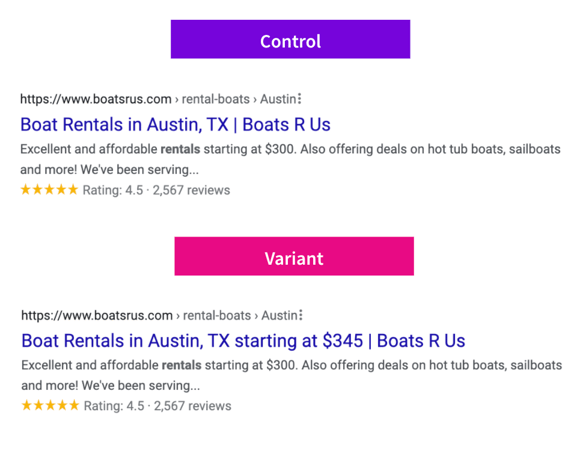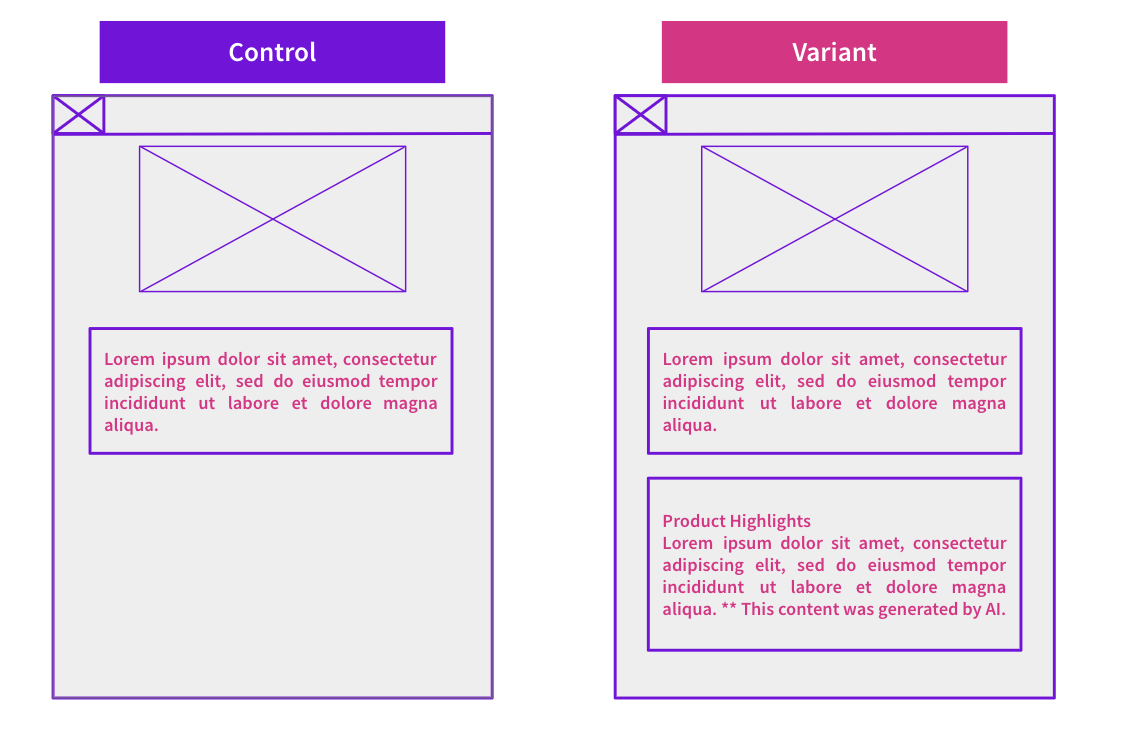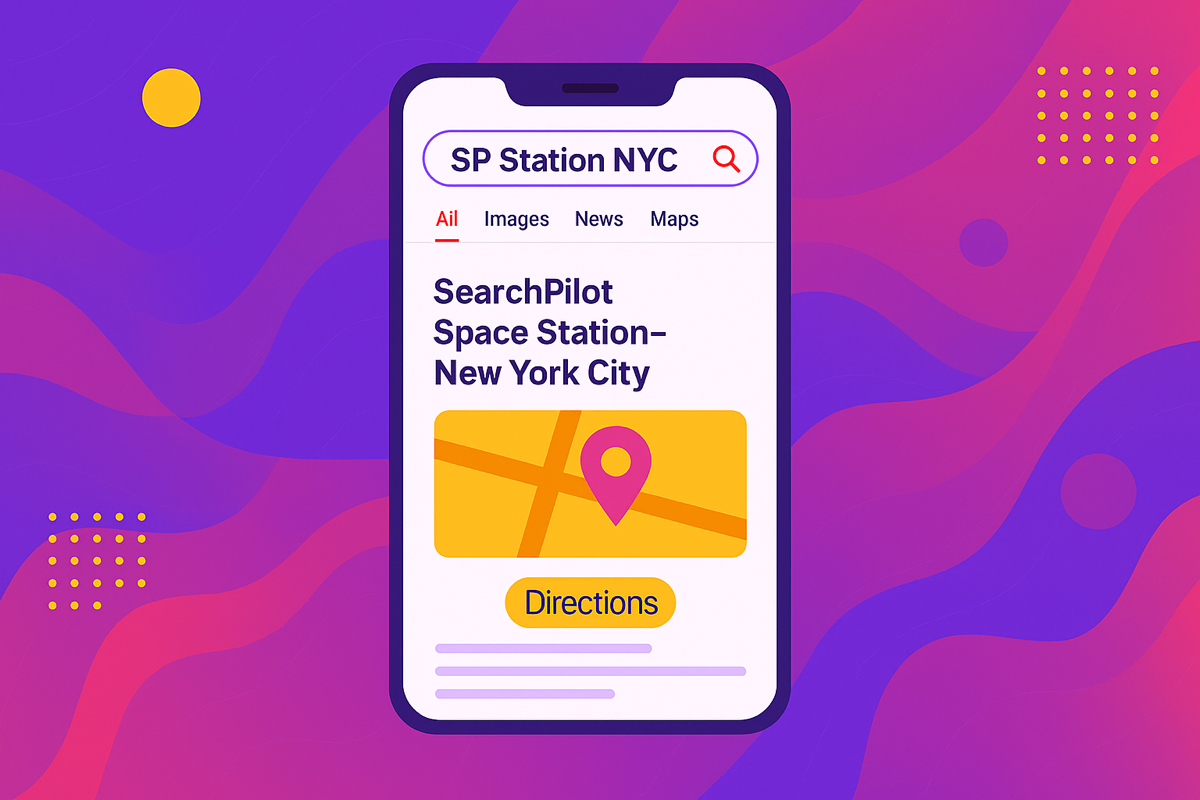Start here: how our SEO split tests work
If you aren't familiar with the fundamentals of how we run controlled SEO experiments that form the basis of all our case studies, then you might find it useful to start by reading the explanation at the end of this article before digesting the details of the case study below. If you'd like to get a new case study by email every two weeks, just enter your email address here.
For this week’s #SPQuiz, we asked our Twitter followers what they thought the impact on organic traffic was when we added dynamic prices to the title tags of a customer’s travel/rental website.
Here’s what people thought:
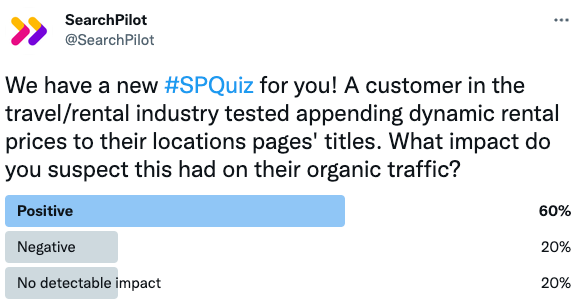
The majority of you believe that adding dynamic prices would positively impact organic traffic. At the same time, there was an even split of 20% from the rest of our followers, thinking it would have no detectable or negative impact. The majority would be correct that adding dynamic prices to the titles positively impacted organic traffic!
Read the full case study below to find out why!
The Case Study
We previously published adding prices to title tags for an ecommerce website where we saw a negative impact on organic traffic. Would we see the same result in a different industry? Does adding static prices yield a different effect compared to using dynamic prices?
A customer in the travel sector tested adding rental prices to the title tags of their location pages to promote their competitive prices. They ran two separate experiments, once using static prices and the next with dynamic prices.
Let’s talk about the first time we ran this test – our customer pulled internal data that reflected their current rental prices and added it as the fixed costs to the end of their title tags. As these prices were set to the date the data was pulled, the prices in the titles did not update dynamically to reflect fluctuations in the price of the rentals throughout the test.
Below is the comparison between the control and the variant when we added static prices:
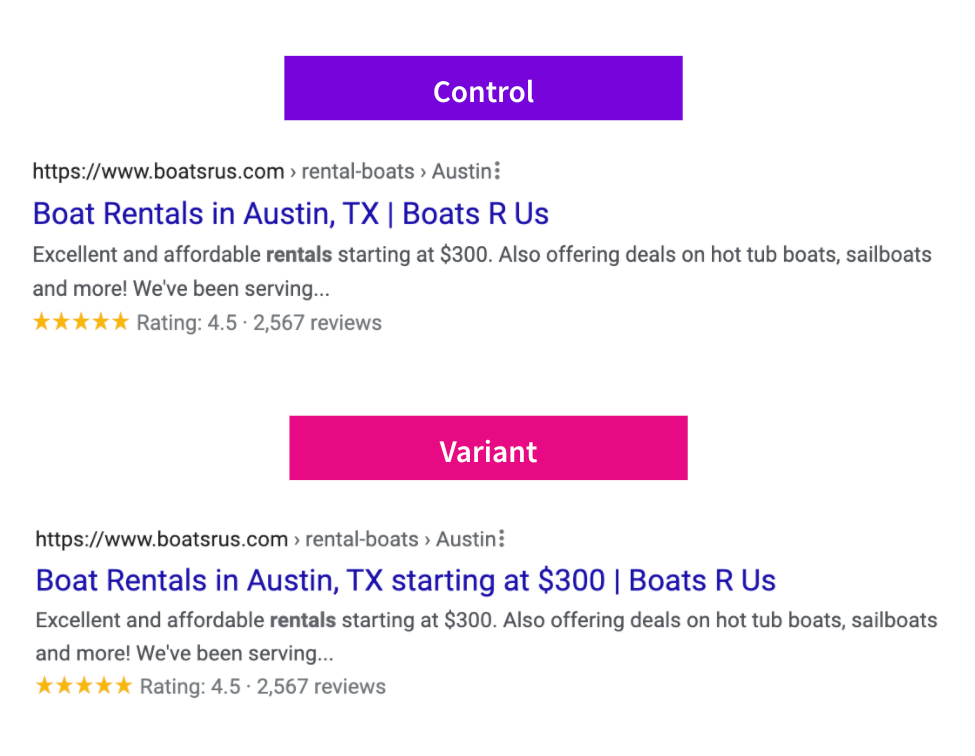
The chart below shows the impact of this test on organic sessions for their location pages:
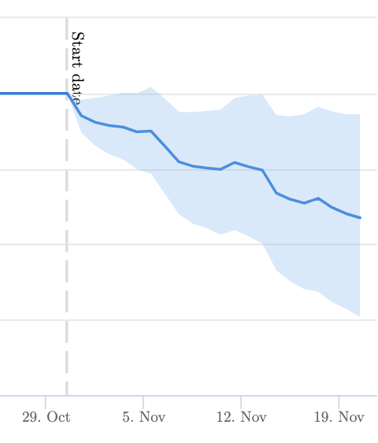
The static prices resulted in a negative impact on organic traffic with a 7% loss in organic sessions.
Now let’s look at the following test — this test was run at a later date after our customer was able to provide us with the price data for their services, allowing us to make the prices dynamic so that they changed to reflect the true current prices.
Below is the comparison between the control and the variant when we added dynamic prices:
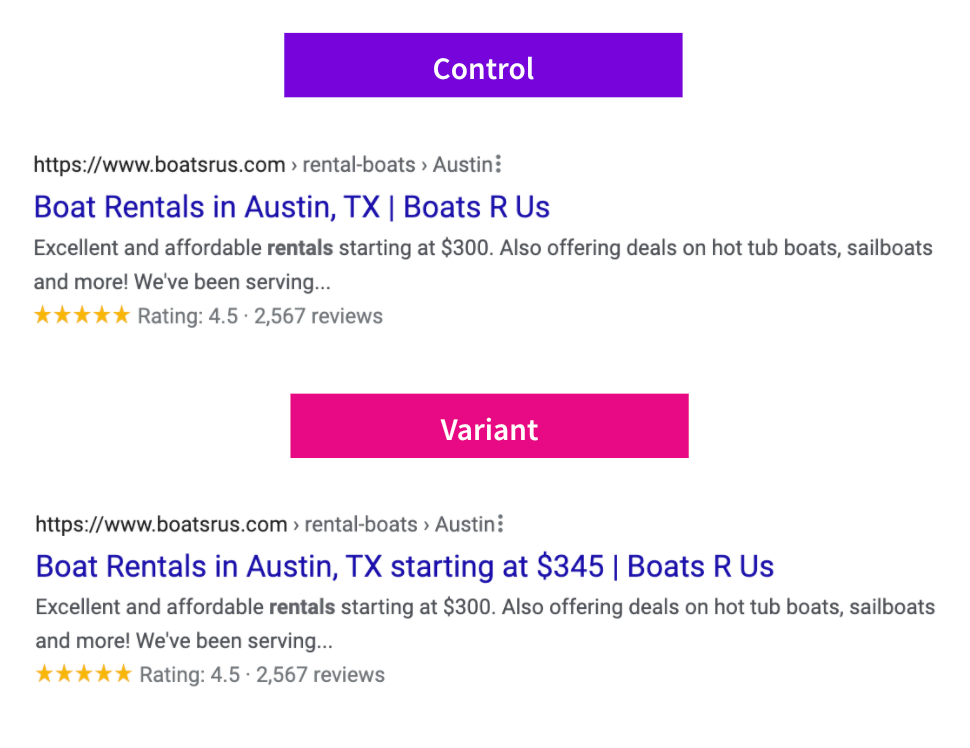
The chart below shows the impact of this test on organic sessions for location pages:
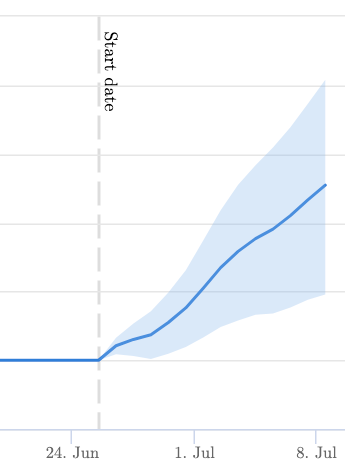
A major difference in results!
Implementing dynamic prices in the title tag resulted in a 10% uplift in organic traffic, compared to the 7% loss we saw when adding static prices to the title. In our previous case study, we mentioned that using static prices could reflect something different from the actual prices of the boat rentals. That may have sent negative user signals, given that the prices in the SERP weren’t accurate.
However, it’s likely the static prices weren’t competitive enough with other rental companies on the search results page. With the dynamic prices changing more frequently, they may have appeared more competitive in the search results page compared to the static prices.
In this case, adding dynamic prices to title tags further helped display the most up-to-date rental costs and possibly made the prices seem competitive on the search results page. Every website and industry is different and may see varying results for the exact change, so we highly recommend testing it if you have the opportunity to do so.
To receive more insights from our testing, sign up for our case study mailing list, and please feel free to get in touch if you want to learn more about this test or our split-testing platform more generally.
How our SEO split tests work
The most important thing to know is that our case studies are based on controlled experiments with control and variant pages:
- By detecting changes in performance of the variant pages compared to the control, we know that the measured effect was not caused by seasonality, sitewide changes, Google algorithm updates, competitor changes, or any other external impact.
- The statistical analysis compares the actual outcome to a forecast, and comes with a confidence interval so we know how certain we are the effect is real.
- We measure the impact on organic traffic in order to capture changes to rankings and/or changes to clickthrough rate (more here).
Read more about how SEO testing works or get a demo of the SearchPilot platform.
